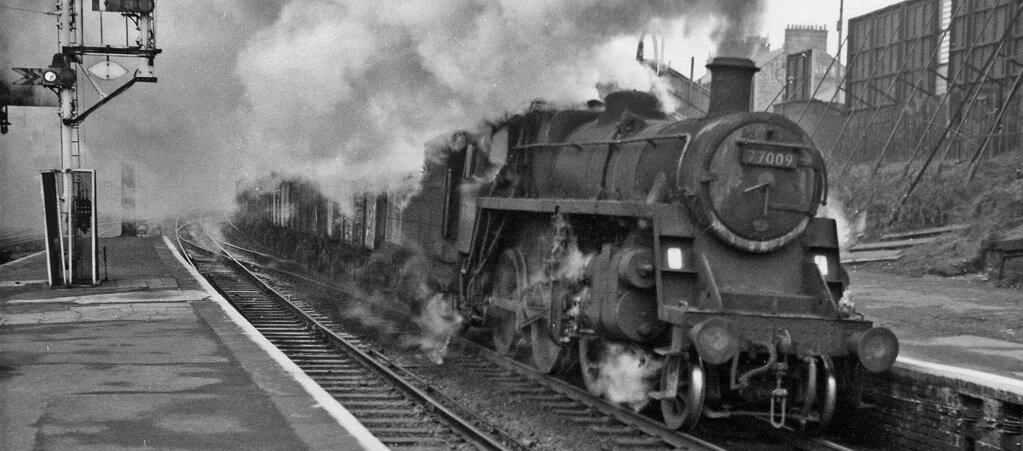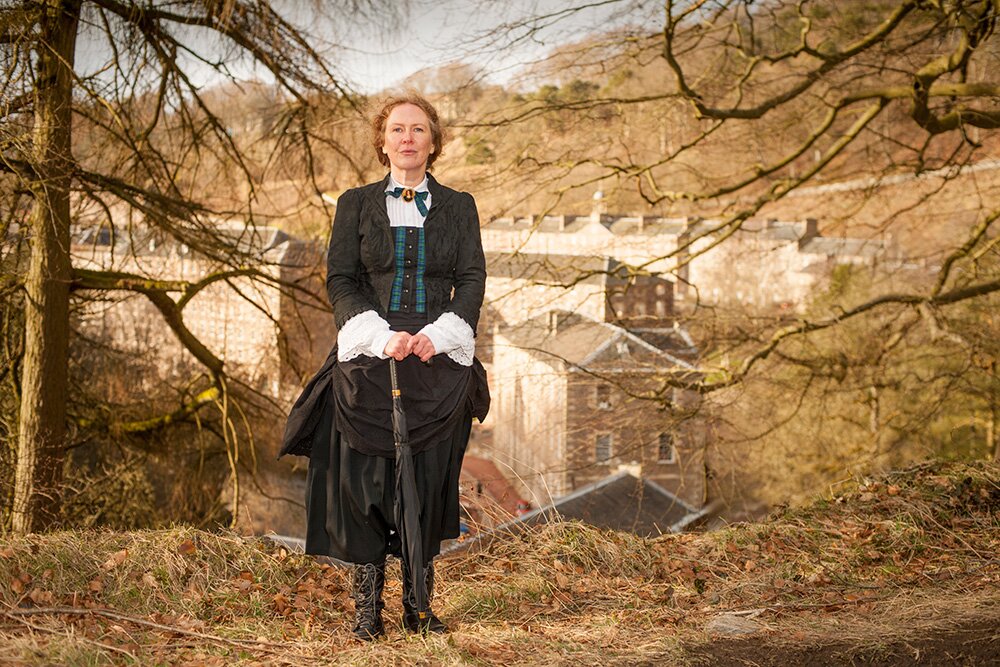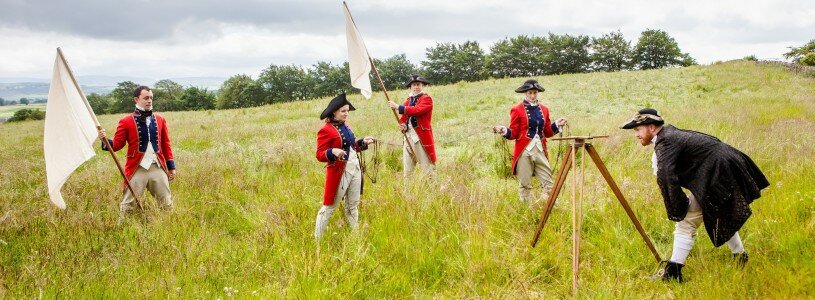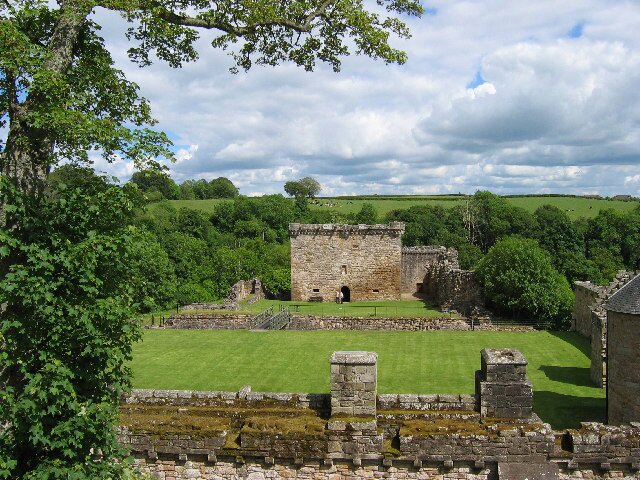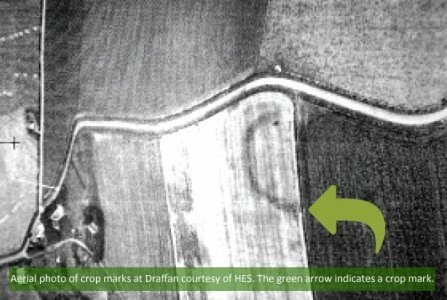Tourism and Art in the Clyde & Avon Valley
The inspiration for artists and travellers
The Clyde Valley has long been known for its beauty and fertility, celebrated by poets and writers, and captured by the pencil and paintbrush of many artists. By the late 18th century the area attracted a great number of travellers seeking out the dramatic scenery of the Clyde, Avon and Mouse Water. The Clyde achieved an iconic status as the epitome of the picturesque and sublime.
But this was not always the case. Prior to this time nature had largely been seen as a resource to be used, and the purpose of studying nature was so that it could be “mastered, managed and used in the service of human life” – Joseph Glanvill (1668). Indeed the study of nature was to determine whether it could be of use or otherwise dominated by man (see "Man and the Natural World link on right). To enjoy nature for its beauty was seemingly quite unusual. There was also a feeling among the aristocracy that nature was cruel and ugly, and should be viewed only through a picture frame or mirror. A possible reminder of this attitude can be found at the Falls of Clyde, in the form of the Bonnington pavilion (see related item below).

However, people’s sensibilities began to change and landscapes which were once shunned by travellers became increasingly admired. These changing attitudes were recorded writers and poets, and no doubt contributed to this positive impression of nature and its wonders. Among the first tourists to record their impressions of the Clyde valley was the Rev. Richard Pococke who visited Corra Linn in 1760, writing that ‘the high rocks on each side are most beautifully adorned with trees, being altogether the finest cascade I ever saw’. Dorothy Wordsworth, in 1803, writes of the ‘pleasure grounds’ between New Lanark and Corra Linn, and encounters a number of other travellers and tourists who have come to see the falls.
 Travellers were also no doubt drawn by the numerous connections with William Wallace and the woodlands of the Clyde Valley, with some of the earliest references to the wooded banks of the Clyde being the hiding place of Wallace made by tourists in the 1770s. Speaking of the reputed connection with Wallace in 1776, Rev. William Gilpin wrote that “these anecdotes, whether true or fabled, add grandeur to the scene”. Near Corra Linn is a cave, one of several in the area and many more throughout Scotland, supposed to be a hiding place of Wallace. However, W. Davidson (1828) records his scepticism; “This excavation has already received the appellation of ‘Wallace’s Cave’, but it is a modern formation, done by the hands of a person, who lately resided at New Lanark. Another century will confirm it as having been one of the Warrior’s retreats.” Another ‘Wallace’s Cave’ is located at Cartland Craigs. However, Davidson again states that this is a “puny hole” which would not be suitable for a person to hide in. Irving and Murray (1864) wrote in their record of the Upper Ward of Lanarkshire, that while there is a “prevalent tradition” that Wallace hid in a cave when he escaped Lanark, there is no indication that he did, and indeed the poet Wyntoun in the late 14th century wrote of Wallace hiding not in a cave with limited visibility, but in a woodland from which he could see Lanark. Dorothy Wordsworth, when prompted to visit Cartland Craigs, states that she "passed two of Wallace's Caves. There is scare a noted glen in Scotland that has not a cave for Wallace or some other hero."
Travellers were also no doubt drawn by the numerous connections with William Wallace and the woodlands of the Clyde Valley, with some of the earliest references to the wooded banks of the Clyde being the hiding place of Wallace made by tourists in the 1770s. Speaking of the reputed connection with Wallace in 1776, Rev. William Gilpin wrote that “these anecdotes, whether true or fabled, add grandeur to the scene”. Near Corra Linn is a cave, one of several in the area and many more throughout Scotland, supposed to be a hiding place of Wallace. However, W. Davidson (1828) records his scepticism; “This excavation has already received the appellation of ‘Wallace’s Cave’, but it is a modern formation, done by the hands of a person, who lately resided at New Lanark. Another century will confirm it as having been one of the Warrior’s retreats.” Another ‘Wallace’s Cave’ is located at Cartland Craigs. However, Davidson again states that this is a “puny hole” which would not be suitable for a person to hide in. Irving and Murray (1864) wrote in their record of the Upper Ward of Lanarkshire, that while there is a “prevalent tradition” that Wallace hid in a cave when he escaped Lanark, there is no indication that he did, and indeed the poet Wyntoun in the late 14th century wrote of Wallace hiding not in a cave with limited visibility, but in a woodland from which he could see Lanark. Dorothy Wordsworth, when prompted to visit Cartland Craigs, states that she "passed two of Wallace's Caves. There is scare a noted glen in Scotland that has not a cave for Wallace or some other hero."
Due to political friction much of continental Europe was closed to travellers from Britain by the end of the 18th century, and so the ‘Petit Tour’ of Scotland became a popular alternative to the ‘Grand Tour’. The Falls of Clyde, and to some, the New Lanark mills, were essential stopping points. Among these travellers were a great number of artists, drawn by romanticised accounts of the spectacular scenery. These artists included William Turner, the namesake of the Turner Prize, Jacob More and Joseph Farington, who felt that Corra Linn was “more abundant in matter for a painter’s consideration…than any other fall that I have seen”.


It wasn’t just the Falls of Clyde which attracted the attention of travellers and artists, and the scenery of this part of Scotland provided the inspiration for literature too. Craignethan Castle, which overlooks Nethan Gorge, was the inspiration for Tillietudlum Castle in Sir Walter Scott’s Old Mortality (1816).

The opening of the railways in the mid 19th century saw even more visitors drawn to Lanark and its surroundings, accompanied by a rise in the number of guide books available and the booming picture postcard business towards the end of the century. By the 1870s the number of day-trippers to the Falls of Clyde had to be limited by tickets of admission, which were available from the North Lodge (located near the hydroelectric power station).
The decline of industry in the 20th century and the subsequent shrinking of the railway network saw the loss of many of the great country houses and their designed landscapes. To many the hydroelectric power constructions along the Clyde, particularly near the falls, also had a negative effect on the area’s scenic character. Further change came with the complete closure of New Lanark mills in 1968 and it would take many years for them to be conserved. It has now, however, been recognised as a World Heritage Site for outstanding industrial heritage.
The 21st century has seen some positive developments for tourism once again, with the construction of the Clyde Walkway in 2005, one of ‘Scotland’s Great Trails’, as well as a improvements in provision for visitors along the Clyde Valley, accompanied by a resurgence in orchards through the efforts of local groups (like the Clyde Valley Orchard Co-op) and projects like the Clyde and Avon Valley Landscape Partnership.
'Find out more in the Historical Development Study available to read embedded below, or under the 'Other Resources' section on the right.


